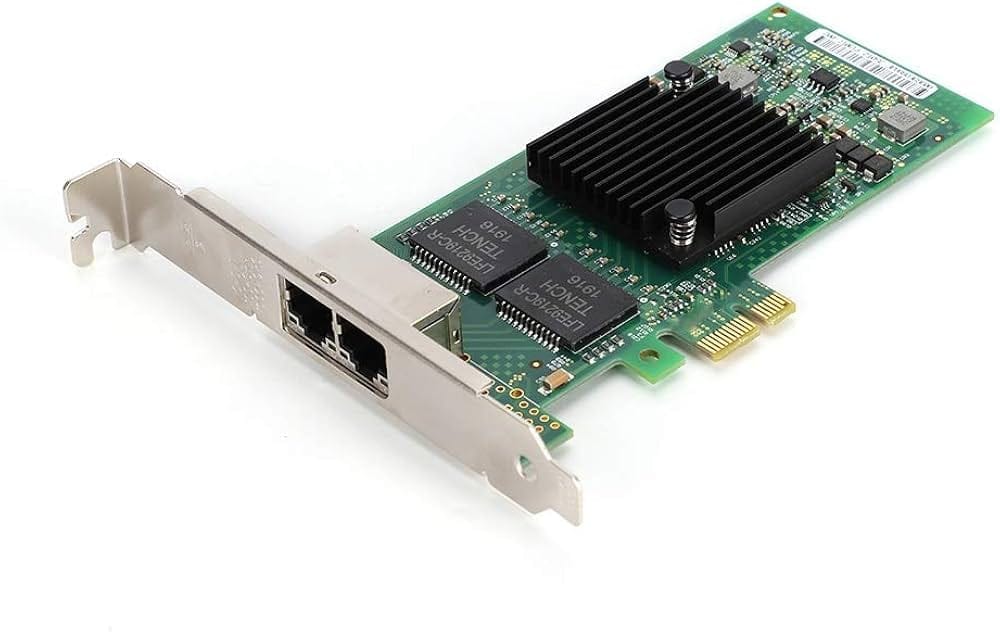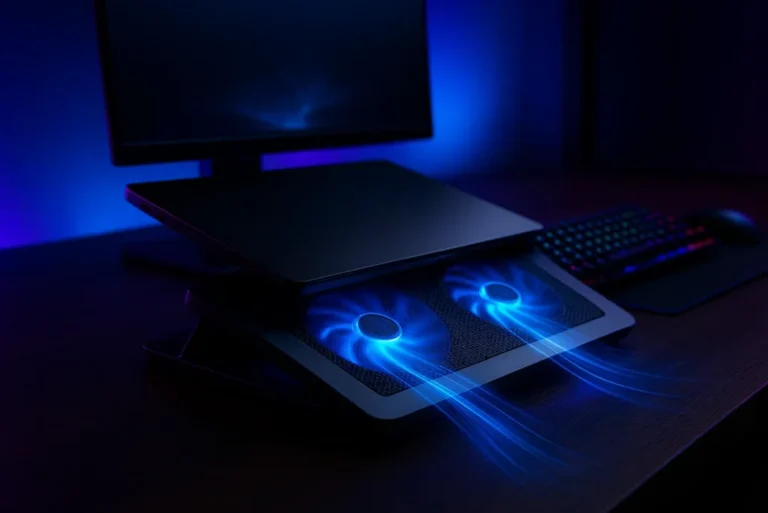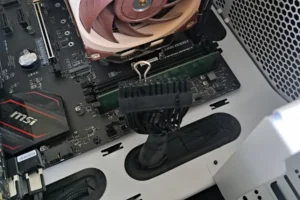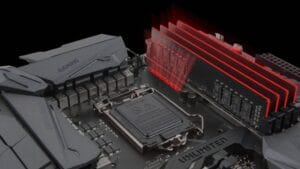In our increasingly connected world, having Internet access has become almost indispensable for working or playing, and a fast, stable Internet connection can make all the difference. In this guide to buying computer hardware, I’ll show you several ways to add the Internet to your computer.
Ethernet or Wi-Fi network card for computer? Buying guide
- Before you buy: Check the speed of your Internet box
- For gamers, streamers and small businesses
- For office users
Before you buy: Check the speed of your Internet box
The speed of your Internet box is the speed at which your box can send and receive data. It is measured in megabits per second (Mbps). The speeds advertised by Internet Service Providers (ISPs) are often theoretical and may vary.

Before rushing out to buy a new Ethernet or Wi-Fi network card, take the time to check the speed of your Internet box. This will enable you to make a choice more suited to your real needs and optimize your investment.
For gamers, streamers and small businesses
For intensive use, such as gaming or video streaming, opt for high-end solutions like Gigabit Ethernet or Wi-Fi 6.
They require a fast, stable connection to avoid latency and packet loss. A Gigabit Ethernet network card with Cat 6a or Cat 7 cable is recommended.
For Wi-Fi, a Wi-Fi 6 card is ideal for optimum performance.
Streamers and content creators need high bandwidth for downloading and streaming high-resolution videos. A 10GbE Ethernet network card with Cat 6a cable, or a Wi-Fi 6 card, will be perfect for you.
Don’t forget to choose appropriate network cables to maximize the performance of your connection.
Buy an Ethernet network card
The network card is a more powerful solution for adding an Internet connection to your computer. It requires the CPU to be opened and installed in a PCI or PCIe slot. Although installation is a little more complicated, it offers greater stability and higher transfer speeds.

After installation in the box, it is often necessary to install a driver to activate it and optimize network performance.
Advantages of a network card :
- Ideal for online gaming, HD streaming and high-bandwidth tasks.
- Superior performance and greater stability.
Disadvantages of a network card :
- More expensive than a WiFi USB key
Ethernet transfer speed (network card)
When setting up a new home or office network, different connection speeds need to be taken into account depending on your use.

Here are the common Ethernet speeds, from slowest to fastest:
1000 Mbps (1000BASE-T or 1GB/s)
It’s today’s standard for most home and business connections. Fast and capable of handling anything you throw at it. With speeds of up to 1000 Mbps, this connection enables fast file transfers and smooth HD video streaming. It’s the ideal solution for connected homes and small offices.
Recommended cable: Cat 6 offers better performance and can support speeds of up to 10 Gbps over shorter distances (up to 55 meters).
10 Gigabit Ethernet (10GbE)
It’s like the Formula 1 of the Ethernet world. It offers lightning-fast transfer speeds of up to 10 gigabits per second (Gbps), ten times faster than the current standard.
Recommended cable: Cat 6a supports 10 Gbps over distances of up to 100 meters, ideal for high-performance installations.
This speed is ideal for environments with high bandwidth requirements.
For example: 10GbE is a perfect choice for data-intensive businesses, but is also beginning to find its way into hyper-connected homes and multimedia production studios where every millisecond counts.
For office users
For office activities such as Internet browsing, e-mail management and the use of office software, reliable but less expensive connectivity solutions are sufficient.
A standard Ethernet connection with Cat 5e or Cat 6 cable offers stable performance and is generally adequate for these purposes.
For Wi-Fi, a standard Wi-Fi 5 or Wi-Fi 6 card will ensure good coverage and satisfactory speeds for everyday tasks.
Office users need a stable connection for light data transfers. A Gigabit Ethernet network card or Wi-Fi 6 card is recommended to ensure a smooth, uninterrupted experience.
![]() Images are displayed when advertising is allowed.Buy a USB Wi-Fi Dongle
Images are displayed when advertising is allowed.Buy a USB Wi-Fi Dongle
A Wi-Fi key is a practical, easy-to-install option for adding an Internet connection to your computer. Although it’s generally less powerful than a network card, it’s perfectly suited to office uses such as watching streaming movies, writing e-mails, surfing the web and playing small games.

Installation is simple: just plug the Wi-Fi key into a USB port on your computer, install the drivers (if required) and connect to a Wi-Fi network.
Advantages of a Wi-Fi key :
- Quick and easy to install.
- Portability, can be used on different computers.
- Ideal for everyday tasks and travel.
Tip: To install a driver, simply Google [model name + driver], download the corresponding file and install it, ready for use.
Wi-Fi transfer speed
When setting up a new home or office network, it’s important to consider the different Wi-Fi connection speeds available, depending on your use.

Wi-Fi 5 (802.11ac)
It’s the popular standard for most modern home and business connections. Wi-Fi 5 offers transfer speeds of up to 3.5 Gbps, enabling fast file transfers and an uninterrupted HD video streaming experience. It’s a solid solution for connected homes and small offices.
Wi-Fi 6 (802.11ax)
Wi-Fi 6 is the evolution of Wi-Fi 5, offering faster transfer speeds and greater efficiency, particularly in dense environments where many devices are connected. With theoretical speeds of up to 9.6 Gbps, Wi-Fi 6 is perfect for advanced home networks and offices requiring high performance.
Wi-Fi 6E
Wi-Fi 6E is an extension of Wi-Fi 6, operating on the 6 GHz frequency band in addition to the 2.4 GHz and 5 GHz bands. This new frequency band enables even faster transfer speeds and reduced latency, with potential speeds similar to Wi-Fi 6, up to 9.6 Gbps. Wi-Fi 6E is ideal for highly connected environments requiring high bandwidth and optimum performance.
2.4G and 5G frequency bands for Wi-Fi
Modern Wi-Fi networks often use dual frequency bands:
- 2.4G: Offers longer range but slower speeds. Ideal for devices located far from the router or in areas where obstacles may weaken the signal.
Recommended use: For computers and connected objects (IoT) located far from the router or in rooms separated by several walls.
- 5G: Provides faster speeds over a shorter range. Perfect for computers close to the router and requiring high bandwidth.














